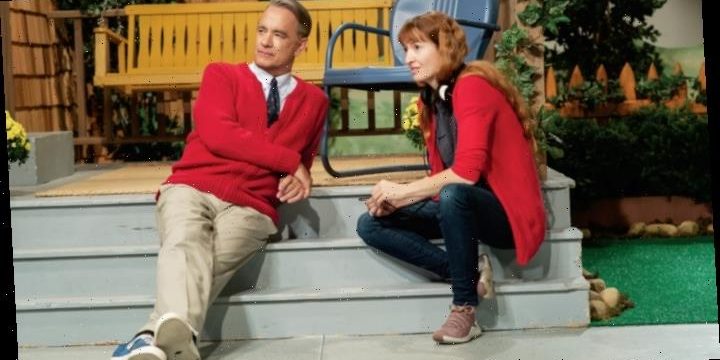“A Beautiful Day in the Neighborhood” director Marielle Heller didn’t want Tom Hanks to wear any prosthetics when playing Fred Rogers in the biopic, which was inspired by the Esquire article “Can You Say … Hero?” by Tom Junod (played by Matthew Rhys as a character named Lloyd Vogel). Heller felt such measures would throw up a barrier between the audience and the performance. Hanks, for one, was happy to hear that.
“To channel Mister Rogers, I had several questions for Mari,” says Hanks. “Questions including how do you want your movie to look like and feel like in the body of Mister Rogers? Are we going to do CGI? Are we going to have a lot of graphics in order to turn me into him — which is possible because I’m not as skinny as Mister Rogers, you know. Are we going to do dental plates? She said we’re going to do a wig, and we’re going to do some eyebrows, and that’s going to be that. I said fabulous.”
Getting the actor to look enough like the iconic children’s TV host, in a believable but not overt way, was a balancing act for which the director recruited makeup artist Ma Kalaadevi Ananda, costume designer Arjun Bhasin (both of whom collaborated with Heller on “Can You Ever Forgive Me?”) and hair designer Tony Ward (“The Beguiled”).
Popular on Variety
Ananda, who trained as a painter before moving into film and television, focused on the TV host’s key attributes. “The authenticity and simplicity of Fred Rogers as a person had to be carried through in the transformation of Tom into Fred,” she says. Her process was to draw defining aspects of Rogers’ face from a photo onto a canvas painting of Hanks. “Using only color, I could thin Tom’s face and his nose. I made his skin tone lighter and added a cleft in his chin. I also accentuated a furrowed brow and added color to his lips.”
Rogers’ eyebrows had unique characteristics that Ananda strove to capture: They had a right angle on each end, like the beginnings of a U-turn, and the hairs went in every direction. Says Ananda: “They had to be wrangled for close-ups with a bit of spirit gum on a fine brush and a subtle directional sweep.”
For Mister Rogers’ signature look — his brightly colored cardigans, blue canvas shoes, bow tie and penny loafers — Bhasin and Heller were fixated by the details that made him so specific. They looked at what he liked to wear on vacation, the color of his pajama suits, the fit of his swim trunks; it was all there in photographs and on film. Since the world of “Mister Rogers’ Neighborhood” is so familiar to so many people, it was crucial to do it absolute justice, “to re-create these iconic and whimsical characters to look and feel the way they’re imprinted in people’s memories,” Bhasin says.
“Fred Rogers’ first sweaters were made by his mother,” he continues, “and subsequently, over the almost 900 episodes of the show, he wore several different-colored cardigans, both hand- and machine-made. It was really important to me to have them hand-knitted and look used, slightly shapeless and well-worn. We dyed the yarns for exact color matches and had all his sweaters handmade in New York by a very talented knitter called Yasemin. There was so much nostalgia and excitement about the arrival of the first red sweater — we were really holding something iconic in our hands.”
The costume elements aided Hanks in his portrayal.
“Mari wanted Mister Rogers to come through on the lens,” he says. “It was not a spot-on imitation, nor was it a spot-on physicality. You put on those clothes with the blue shoes, and you start walking like Mister Rogers. Then there is the body language. For me,
it all came together when I reined in my natural self and slowed down. That was the hardest part of Mister Rogers — slowing down. It’s finding that tempo and cadence.”
Source: Read Full Article
